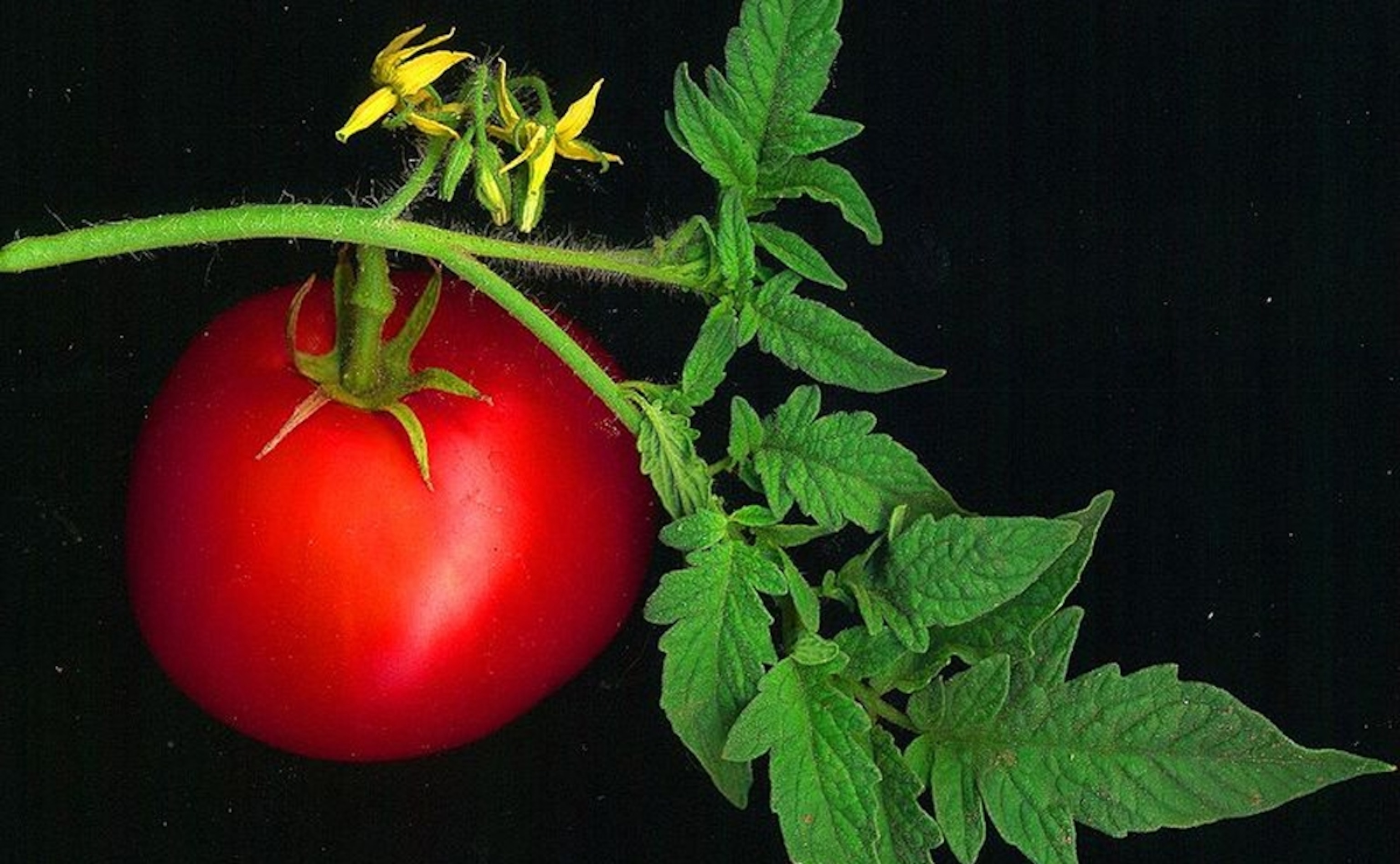
Tomatoes Build Pesticides From The Smells Of Their Neighbours
A caterpillar bites into a single tomato plant and an entire field becomes a little deadlier.
It’s easy to underestimate what plants can do. They’re not just passive victims of animal attacks, in need of rescue through barriers and pesticides. They can produce defensive toxins to poison the creatures that try to eat them; the natural pesticides in our food far outnumber the synthetic ones we spray on them. They can also communicate with each other by releasing alarm chemicals into the air. Some of these attract parasites that kill the leaf-eating pests. Others tell neighbouring plants to start upping their own defences.
But the tomato does something different. It releases an airborne chemical that works not as an alarm, but as an ingredient. Other tomatoes can grab the substance from the air, and convert it into a toxin within their own tissues. They can turn an odour into a chemical weapon.
Koichi Sugimoto from Yamaguchi University discovered this trick after unleashing the common cutworm—a moth caterpillar—on potted tomato plants. Tomatoes can usually kill around 30 percent of these pests on their own. But Sugimoto showed that their defences become stronger if they sit downwind of other tomatoes that face a cutworm assault. If they detect the whiff of infested neighbours, they can kill almost 50 percent of their own cutworms.
This ability is the result of a single chemical called HexVic. Compared to naive tomatoes, those that are exposed to infested plants have 24 times more HexVic in their tissues, and this is one of the only substances to distinguish the two groups.
You might assume that the tomatoes make their own HexVic, after detecting an alarm chemical released by their infested peers. That’s partly true; they do make their own, but not from scratch. Their stockpile depends entirely on an ingredient called (Z)-3-hexenol, which is released by the infested plants.
Sugimoto’s team proved this by spraying tomatoes with a slightly radioactive version of (Z)-3-hexenol. The plants amassed lots of radioactive Hexvic but none of the normal kind. They were clearly building the substance from (Z)-3-hexenol in the air, rather than making it themselves.
There are many examples of animals that steal poisons from their prey, like the sea slug Glaucussea slug Glaucus which nicks the stings of jellyfish, or the tiger keelback snake that pilfers poisons from the toads it eats. But the tomatoes are doing something very different—they’re equipping each other with the building blocks of weapons. They’re like soldiers who react to enemy fire by throwing gun parts and bullets to their squadmates.
How does this defence play out in nature? Sugimoto’s team made a preliminary stab at answering this question by planting 16 tomato plants in a field outside their university. As in the lab, the tomatoes built up more HexVic if they were exposed to infested plants.
But how exactly do they convert (Z)-3-hexenol into Hexvic? And since many plants release (Z)-3-hexenol when they’re damaged by plant-eaters, do other species rely on the same defence? Could tomatoes grab chemical from other plants to build their toxic stockpiles?
Reference: Sugimoto, Matsui, Iijima, Akakabe, Muramoto, Ozawa, Uefune, Sasaki, Alamgir, Akitake, Nobuke, Galis, Aoki, Shibata & Takabayashi. 2014. Intake and transformation to a glycoside of (Z)-3-hexenol from infested neighbors reveals a mode of plant odor reception and defense. PNAS http://doi/10.1073/pnas.1320660111
